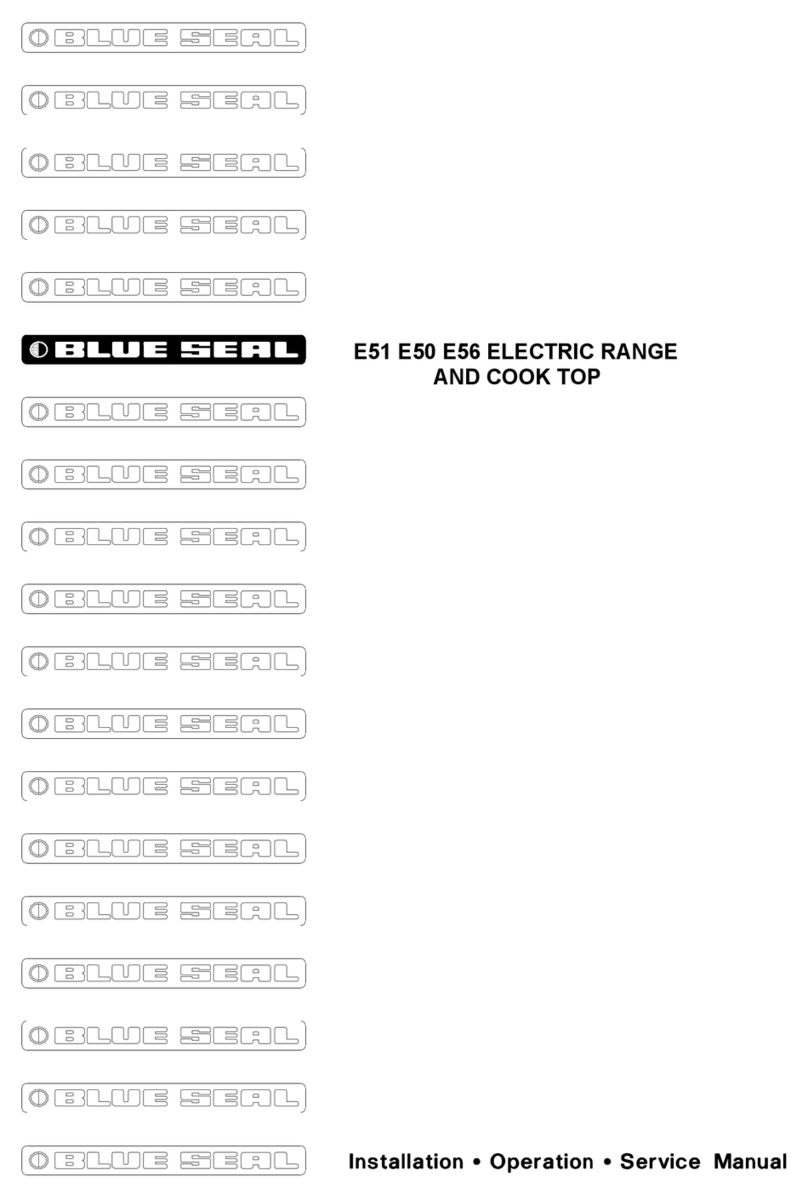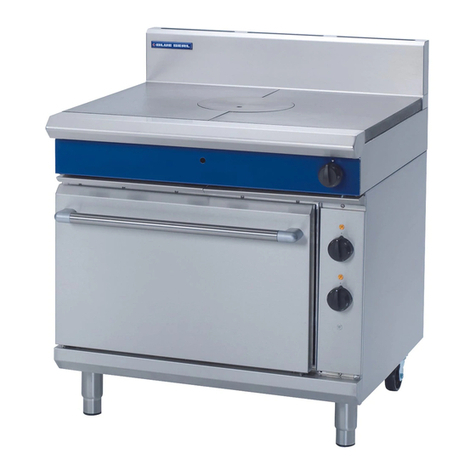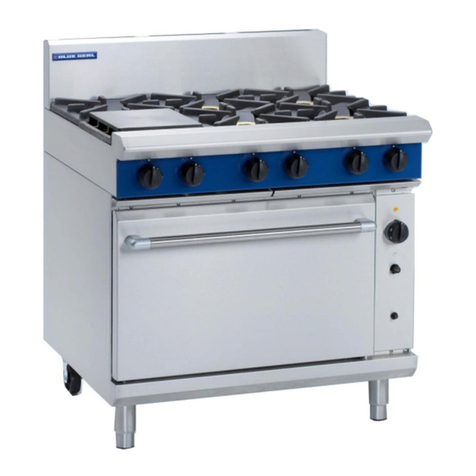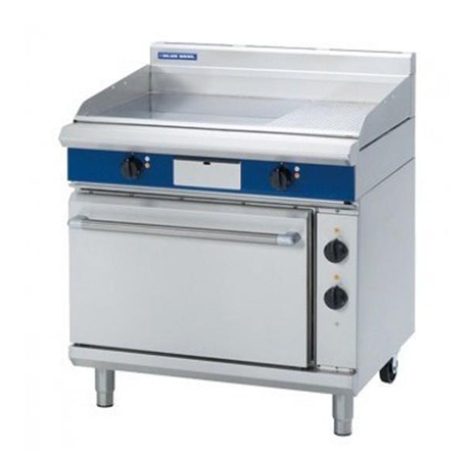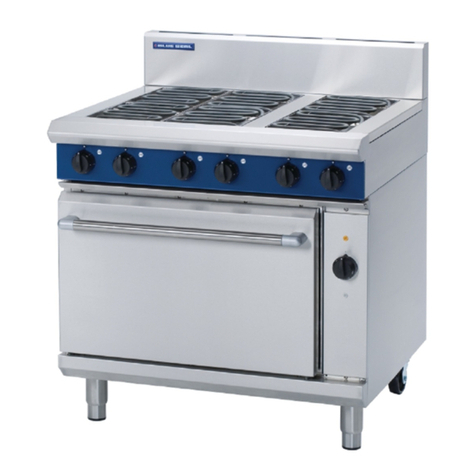-8-
Revision 3/F3601
It is important that this oven is installed
correctly, and that the operation is correct
before handing over to the user.
This appliance must be installed in
accordance with national installation codes
and in accordance with relevant national /
local codes covering gas and fire health.
UNITED KINGDOM - Gas Safety (Installation
& Use) Regulations 1984 (Amendment
1990).
NOTE:
Do not store or use gasoline or any other
flammable vapours or liquids in the vicinity of
this or any other appliances.
Do not obstruct or block the appliance’s flue.
Never directly connect a ventilation system to
the appliance flue outlet.
Installation must allow for sufficient flow of
fresh air for the combustion air supply.
Installation must include adequate ventilation
means, to prevent dangerous build up of
combustion products.
2.1 BEFORE CONNECTION
Check the type of gas, the specified operating
pressure and the hourly consumption. This
information is clearly stated on the rating plate
which is located to the left of the control panel.
When checking pressure, be certain that all
other equipment on the same gas line is
turned on.
Check the gas supply characteristics for the
type of gas, supply line pressure and capacity.
A regulator is supplied with appliances for use
on natural gas. (These should be fitted only
by a licensed gas fitter).
The operating pressures for the respective
gases are:
Natural (G20) 1.0kPa / 10 mbar (4.0" WG)
Propane (G31) 3.7kPa / 37 mbar (14.8" WG)
The pressure test point for measurement of
correct appliance operating pressure is
located at the hob left front corner.
2. INSTALLATION
On Propane gas the pressure is controlled by
the supply pressure.
On Natural gas the pressure is controlled by
the appliance’s regulator, which can be
adjusted to obtain correct operating pressure.
2.2 ASSEMBLY
1) Tilt the oven onto its LH side and fit both
the right front leg and right rear roller in
the corresponding leg rings.
2) Secure each one in place with the screw
attached.
3) Lift up the LH side of the oven, then fit and
secure the front LH leg and rear LH roller
as described in (1) and (2).
4) Check that all are in place and tightened
firmly.
5) Adjust the two front feet to make the oven
steady and level.
Gas Connection
1) The gas regulator is supplied only for
connection to a Natural gas supply.
2) Units for use on Propane gas do not have
a regulator supplied, as the pressure is
controlled by a supply regulator at the
Propane gas supply tank.
3) It is important that adequately sized piping
runs directly to the connection joint on the
unit, with as few tees and elbows as
possible to give maximum supply volume.
4) An accessible shut-off valve must be fitted
on the supply line before the connection
joint and pressure regulator.
5) A suitable jointing compound which resists
the breakdown action of LP Gas must be
used on every gas line connection, unless
compression fittings are used.
6) Check all connections for leakage.
DO NOT USE A FLAME
WARNING: ALL INSTALLATION AND SERVICE REPAIR WORK MUST BE CARRIED
OUT BY QUALIFIED PERSONS ONLY.
